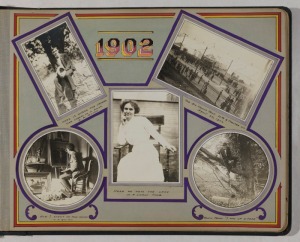Oftentimes, history can seem like an accumulation of paper trails, a collection of stories told through the letters, diaries, and other written records that our ancestors leave behind. However, graphic materials are also compelling historical artifacts, as I’m continually reminded while working on rights and reproductions orders at HSP. Within our rich and diverse collections, HSP houses over 300,000 graphic items and these materials, whether they be photographs, watercolors, lithographs, maps, or other media, are a valued part of the historical record and often integral to the stories that our patrons aspire to tell.
A few months ago, I received a request for historic images of Manayunk for a documentary about Samuel Hughes, a Welshman who immigrated to Philadelphia in 1837 and settled on a dairy farm in Manayunk. While searching our collections, I found this oil and watercolor in one of our graphics collections and was immediately captivated. Painted by an unknown artist sometime around 1840, this image, with its lush, green landscape and open farmland, was so far removed from my own vision of present-day Manayunk that it prompted me to search for more information about Manayunk’s progression from rural farmland to metropolitan hub.
As late as 1817, the population of present-day Manayunk hovered around 60 inhabitants, but the construction of a canal and dam to regulate the Schuylkill, along with the establishment of Manayunk’s first mill in the 1820s, helped the area blossom into a manufacturing hub that drew comparisons to Manchester, England. Still considered part of Roxborough, the expanding mill town was known by the name of its dam, “Flat Rock,” but rapid population growth brought a push for a proper name. In 1824, the names “Udoravia,” “Hydoravia,” and “Bridgewater” all came under consideration, but it was “Manaiung,” the Native American word for river, that ultimately provided inspiration for the name “Manayunk” (p. 24). On June 11, 1840, Manayunk officially incorporated as a borough, completing its transformation from, in Jones’ words, a “once quiet and retired valley” to a miniature town that finally became part of the extended city of Philadelphia in 1854.
The more I read about the early history of Manayunk, the more I came to appreciate this painting and the other images in our collections as snapshots of a moment time that perfectly capture Manayunk’s development from a stretch of open farmland along the Schuylkill River to a budding industrial center. Explore HSP’s Digital Library (http://digitallibrary.hsp.org/) for more great graphic materials that complement and enhance our understanding of the past – you never know what visual history you’ll uncover.



























